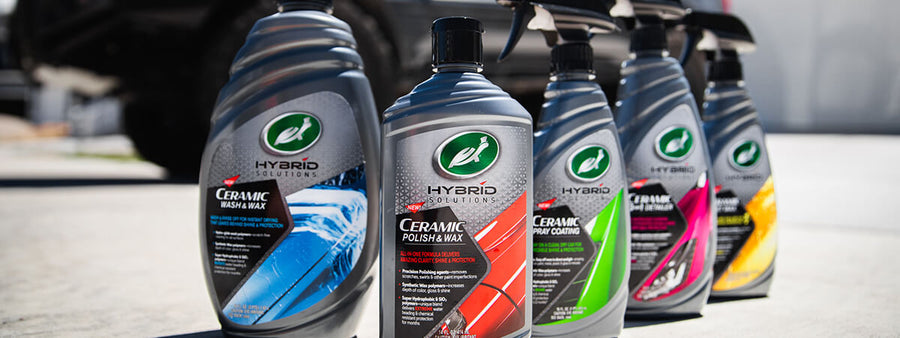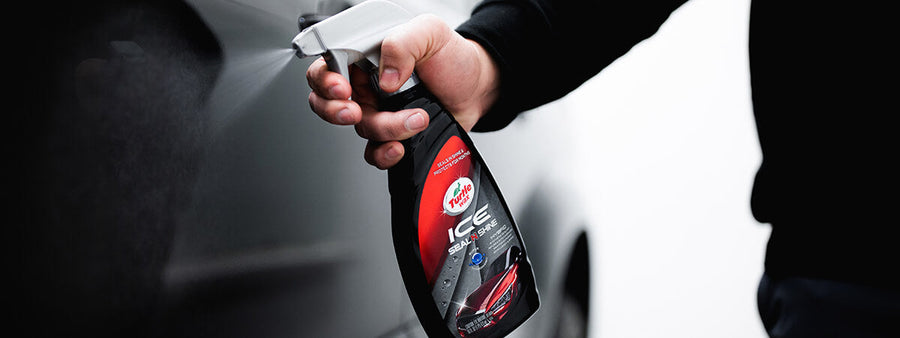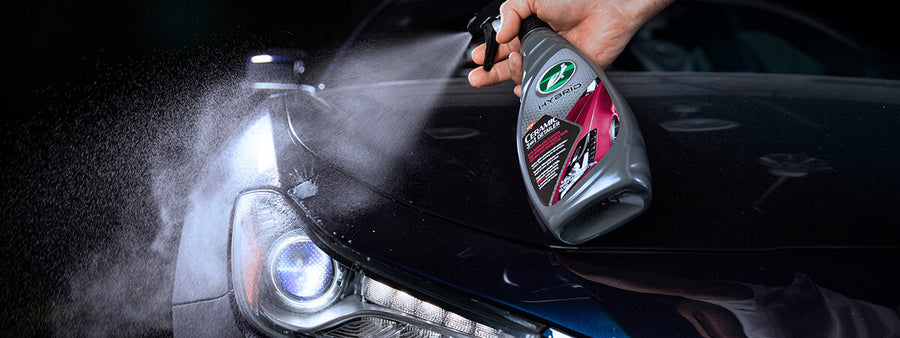
How Car Wax Protects Your Paint Job
- How to prep a car for paint job
- The science behind how car wax works
- What can happen if you don’t wax your car
- The differences between synthetic and natural wax
If you’re a new car owner, or even someone who’s owned a vehicle for years, you may be wondering, “Why do I need car wax?”
Well, technically, you don’t need car wax—just like you don’t need to eat three meals a day.
However, in much the same way that experts recommend regular meals to keep your body in good working order, automotive experts recommend waxing your car’s paint job every couple of months to maintain the overall health and lifespan of your vehicle’s finish.
In this article, we’ll explore what makes car wax such a beautiful protectant; how it works to maintain your vehicle’s paint and which type of wax you should choose for your vehicle, whether it be natural, synthetic, liquid, paste, spray... you get the picture.
So, without further ado, let’s dive in, shall we?

What is car wax?
We’ll start with the basics:
Car wax is a protective coating that helps prevent scratches, swirls and other damage to your vehicle’s painted surfaces. It keeps your car’s paint from oxidising, a chemical process that causes the clear coat to dull from heat exposure, and even repels harmful chemicals and UV rays that can damage your vehicle’s paintwork.
This smooth, oily substance is nonreactive, meaning it won’t react with your car’s paint or any of the dirt, sap, bird droppings or traffic film that makes its way onto the surface of your car. It’s also an anti-adhesive, which means that just like a non-stick frying pan, it prevents dirt and other contaminants from sticking to the surface of your car, making it much easier to clean during your routine car wash. In essence, car wax forms a hard, protective layer that shields your vehicle’s delicate coat of paint from the outside world.
But the thing that really helped car wax grow in popularity was its ability to give any vehicle a beautiful, eye-popping shine.
Many automotive enthusiasts now use car wax to give their classic convertible or sports car a deep, glossy finish before taking it to a car show for all to admire.
Nowadays, many detailers rank car wax according to its cosmetic value, looking for the wax that will give your car the deepest and longest-lasting, showroom shine.

What happens without wax
So, why do you need car wax? Whether you wax your car or not, it’s constantly exposed to rain, UV rays, dirt, flying debris and the occasional mishap on the road. Without car wax, even with regular car washes, your vehicle’s paint will show age a lot faster than without that nifty layer of protection.
Let’s say a tree branch snags the side of your car. We’ll compare what happens to a waxed car vs. unwaxed car:
With a layer of wax, that tree branch will likely slide harmlessly across the surface of the wax. But without that protective barrier, a low-hanging branch could leave behind a pretty noticeable scratch in the clear coat. Over time, those scratches start to add up, reducing the overall quality of your finish.
What’s more, these small scratches in the clear coat will start to expose the coloured base coat underneath, make it prone to oxidation and other forms of more serious damage. After years of abuse, your vehicle’s paint may begin to crack and chip away, leaving the bare metal of your car body exposed and vulnerable to rust, which can eat away at and weaken the structure of your entire car. It would take many, many years, but neglecting to protect your vehicle’s paintwork could cause it to—quite literally—fall apart.
Think we’re getting ahead of ourselves here? Have you ever seen an old, abandoned vehicle? The peeling paint and warped, rusty panels only got that way because nobody was there to maintain the car. A vehicle that, at one point, had a great paint job now looks like it belongs in the junk heap. So, taking the extra time to protect your car’s paintwork is important, whether you do it yourself, or have a professional do it for you.

Synthetic vs. natural wax
There are two main types of car wax: synthetic wax and natural wax.
Natural car wax is easy to explain; it's based on naturally occurring waxes found in nature, like beeswax or carnauba wax. Natural waxes, like Turtle Wax Liquid Carnauba Wax, are some of the safest waxes to use on your car, and, because their melting point is higher than a ceramic coating or paint sealant, they give you an even deeper, wet-like shine, making them pretty popular among car enthusiasts. If you enjoy the process of detailing your car, choose a natural wax; they’re much easier to remove than ceramic coatings or paint sealants, and can be applied or reapplied once every 2-3 weeks.
A manmade, ceramic coating, on the other hand, has more strength and durability than a natural car wax. Ceramic coatings are infused with synthetic polymers, like silicone dioxide, that can prevent scratches and swirls in your vehicle’s paint for up to a year! The downside to a sealant, however, is that it lacks the same lustre and shine as a natural wax.
That’s where synthetic wax comes into play. A synthetic wax combines the best of both natural waxes and paint sealants, infusing a natural base like carnauba wax with ceramics and graphene polymers to get the most durability and shine from the product.
Synthetic waxes are especially great if you prefer to detail your car only once or twice per year, with occasional touchups throughout. They also come in liquid, paste or spray formulations, so pick whichever strikes your fancy. Typically, liquid or paste waxes are best for the initial application, and sprays are perfect for speed detailing and easy touchups.
Keep up with routine maintenance
Obviously, you shouldn’t quit washing and taking care of your vehicle, even if your car wax lasts for up to a year! Your wax will only continue to protect your car and shine its brightest if you give your vehicle the proper attention and maintenance. Check out our complete detailing article for more in-depth instructions on how to wash and wax your vehicle, and visit the rest of our How-To section for additional tips, tricks and step-by-step guides.
But most importantly, wax on!







